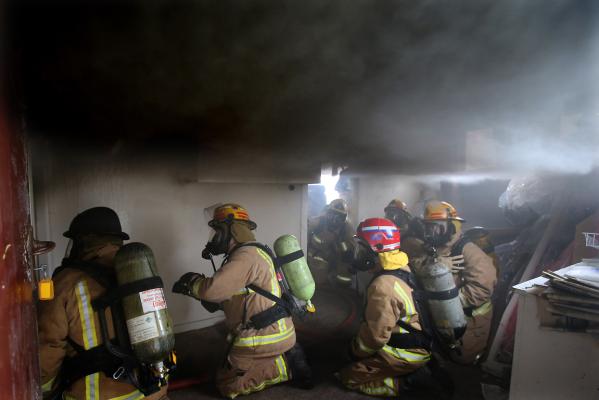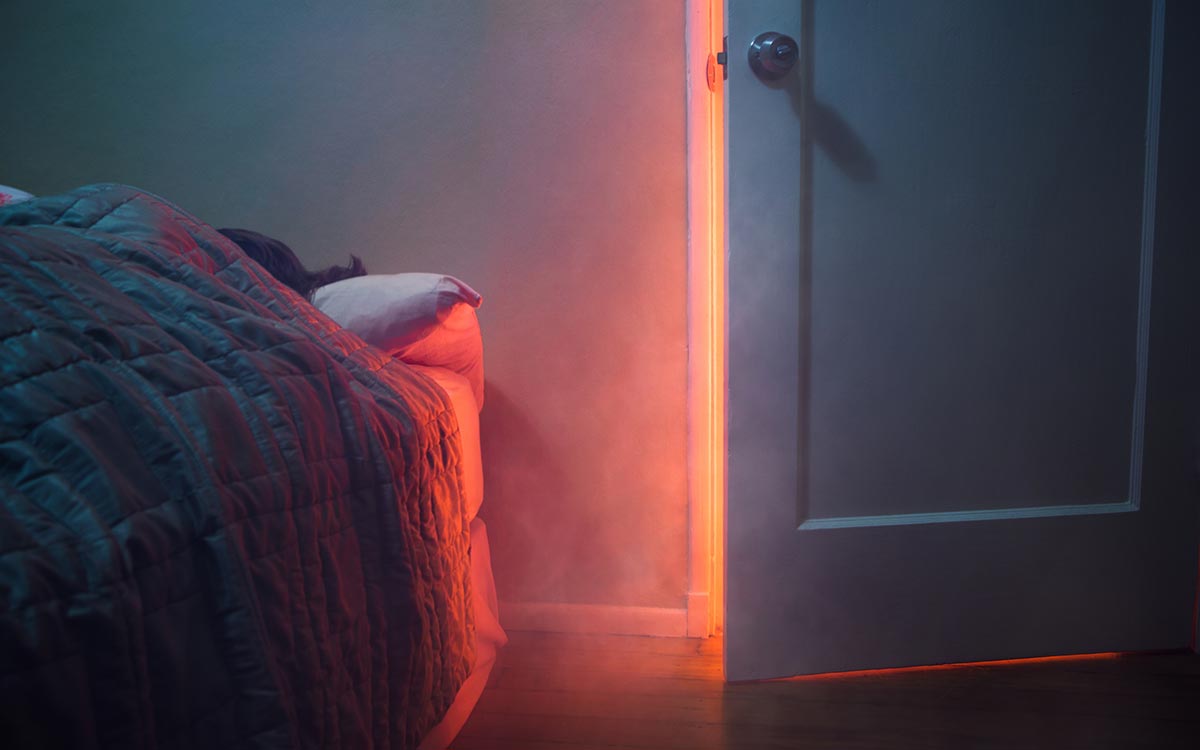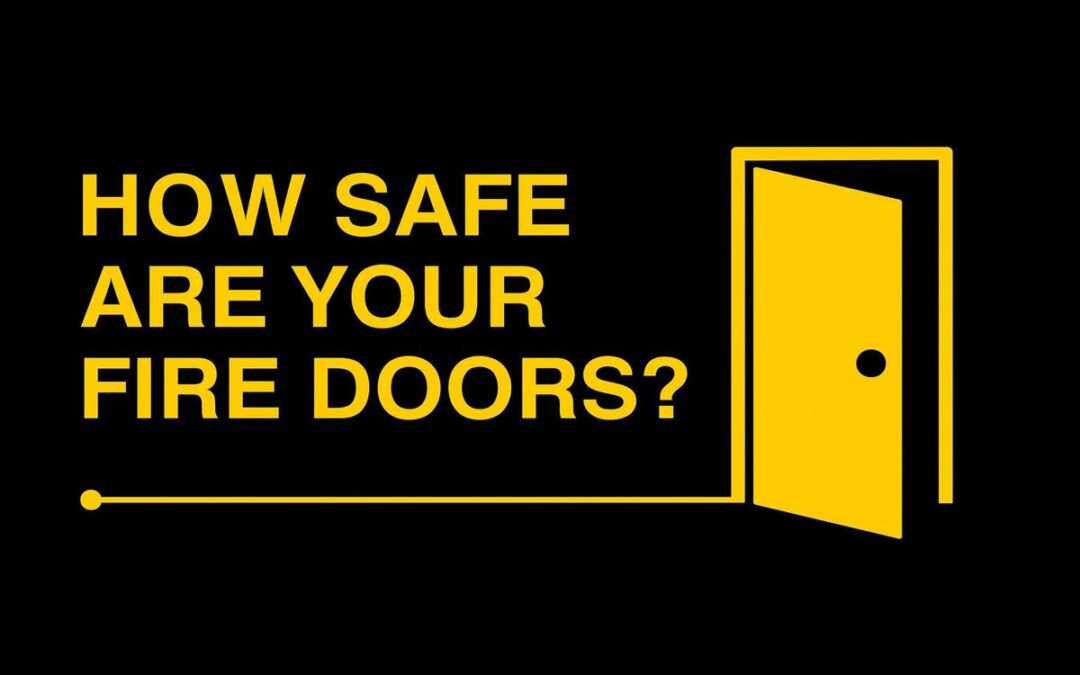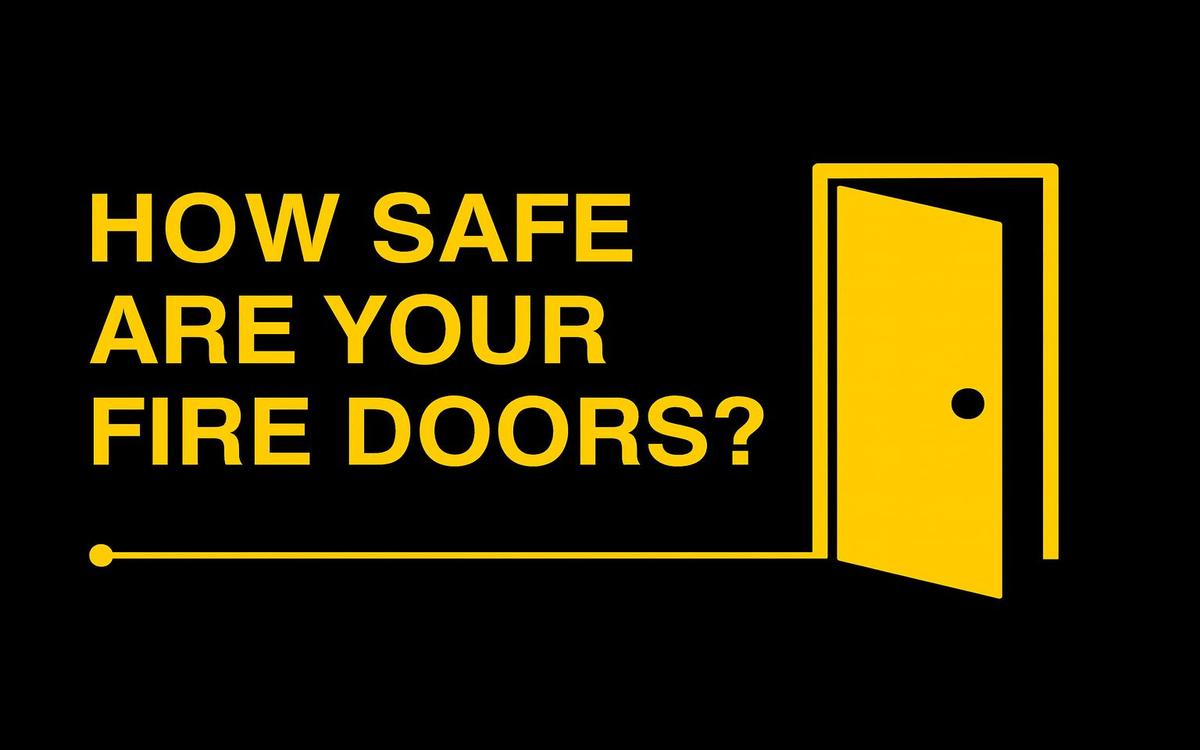Fire and smoke are a deadly duo. However, smoke has more tricks up its sleeve. Most indoor fire deaths are not caused by burns, but by smoke inhalation.
Fire and rescue services statistics tell us that in England in 2016/17, the most common cause of fire deaths and injury was ‘overcome by gas or smoke’.
Smoke leads to disorientation and clouds your vision, making escape difficult. Smoke inhalation is even compared to the feeling of drowning.
The dangers of smoke
As fire grows inside a building, fire burns oxygen, so the more a fire burns, the more oxygen is removed from a room and the more difficult it is to breathe.

Fire will often consume most of the available oxygen, slowing the burning process. This ‘incomplete combustion’ results in carbon monoxide released into the air, which is deadly.
Toxic gases are also released by certain burning objects, with carbon monoxide being the most common. Other toxic gases are released depending on what has caught fire, such as hydrogen cyanide from burning plastics and phosgene from household products such as vinyl materials.
The dangers of fire
Fire reduces oxygen levels dramatically, which is deadly for anyone in the room. Normal outside air is around 21% oxygen. If the oxygen level goes down to 17% people can experience impaired judgement. Less than this has more serious effects, down to unconsciousness at 9% and death at 6%.
When air is hot enough, one breath can kill. Superheated gases burn the respiratory tract.
What safety steps can you take?
It is essential to have a safe escape route. People need to be able to evacuate without breathing in smoke. All evacuation routes should be protected by fire doors to halt the spread of smoke and fire.
It’s important to ensure measures are in place to prevent fire and smoke from spreading throughout a building.
No one can prevent every fire from starting. But you can reduce risks to the lives of others and your building by ensuring the following:
- Fire doors are in good working order
- Evacuation plans are up to date and all building users know exactly what to do if there is a fire
- Means of escape routes not blocked and kept clear
- Fire doors not wedged open
- Everyone is educated on how to prevent fires
- Smoke alarms are working
- Always addressing the needs of those at higher risk of fire injury, such as the elderly, people with mobility issues and children.







0 Comments
Trackbacks/Pingbacks